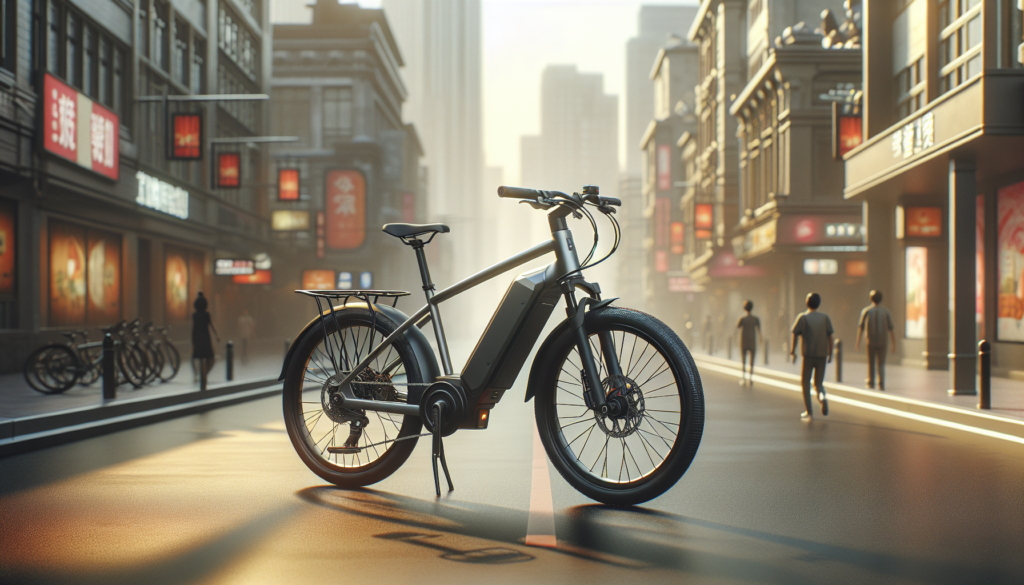
Choosing the right electric bike is crucial for your cycling experience, especially when weighing options like the Xiaomi Ebike Himo Z20 and the ADO A20 Lite. As you dive into the world of electric bikes, it’s essential to understand the distinct features each model offers, such as the Xiaomi Ebike‘s dual electrical assist modes and robust battery specifications, or the ADO A20 Lite‘s lighter weight and versatile assist options.
Comparatively, the ADO A20 Lite from EKO Life MY stands out with its efficient belt system, making it an attractive choice for those seeking a smoother, quieter ride. By keeping in mind key factors such as battery performance, weight, and loading capacity, you’ll be well-equipped to make an informed decision that suits your riding style and needs.
Understanding Electrical Assist Modes: A Comparison
When considering the Xiaomi Ebike Himo Z20 and the ADO A20 Lite, one of the key differentiators is their electrical assist modes. The Xiaomi Ebike features a dual electrical assist mode, allowing riders to choose between Dynamic Sports Mode for an energizing ride or Cool Mode for a more relaxed journey. This flexibility can enhance the riding experience based on the rider’s preferences and terrain, particularly suitable for those who enjoy a sporty edge or a leisurely cruise. The 36V 10Ah Li-ion battery provides a range of about 60km, accommodating various riding scenarios with a maximum load of 100kg.
In contrast, the ADO A20 Lite takes versatility further with its three available electrical assist modes. This feature offers riders the advantage of selecting the level of assistance that best suits their needs, whether it’s for speed, energy efficiency, or a gentle ride. With a slightly less powerful 36V 9.6Ah Li-ion battery, it still manages to cover a range of about 60km, making it a practical choice. Weighing only 16kg and offering a belt system, the ADO A20 Lite is notably lighter and easier to handle, making it an attractive option for urban commuting. Overall, understanding these different assist modes is essential for making an informed decision between the two electric bike models.
Battery Specifications and Range: Xiaomi vs ADO A20 Lite
When choosing between the Xiaomi Ebike Himo Z20 and the ADO A20 Lite, one of the critical factors to consider is their battery specifications and range. The Xiaomi Ebike features a robust 36V 10Ah Li-ion battery, allowing it to cover an impressive range of about 60 kilometers. This makes it an excellent choice for longer commutes or leisurely rides without the anxiety of running out of power.
Additionally, it boasts a dual electrical assist mode—Dynamic Sports Mode for a burst of speed or Cool Mode for a more relaxed ride—catering to various riding preferences while supporting a maximum load of 100 kg. The weight of the Xiaomi Ebike Himo Z20 is 21.6 kg, which can be a consideration for those who might need to carry their bike often.
In contrast, the ADO A20 Lite is equipped with a slightly lower capacity 36V 9.6Ah Li-ion battery but still offers the same range of about 60 kilometers. What truly sets the ADO A20 Lite apart is its lighter weight of only 16 kg, making it a more portable option for city dwellers or commuters who navigate public transport. Additionally, the ADO A20 Lite provides three electrical assist modes, allowing cyclists to switch between them according to their needs. While both options have a maximum load capacity of 100 kg and use mechanical disc brakes for reliable stopping power, the ADO A20 Lite emphasizes a balance of performance and portability, appealing to those who prioritize a lightweight design.
Weight and Portability: What to Consider
When selecting an electric bike, weight and portability are essential factors that can significantly influence your riding experience. The Xiaomi Ebike Himo Z20 weighs 21.6 kg, which is relatively heavier compared to the ADO A20 Lite that comes in at just 16 kg. If you plan to navigate urban environments, the lighter weight of the ADO A20 Lite can enhance maneuverability and ease of transport.
For instance, if you intend to carry your bike up flights of stairs or lift it onto public transport, the reduced weight of the ADO A20 Lite will undoubtedly be an advantage, making it the more practical choice for city dwellers on the go. Moreover, a lighter bike can contribute to a more enjoyable and less tiresome riding experience over longer distances. Furthermore, varying designs can also affect how portable a bike is.
While both bikes feature mechanical disc brakes for efficient stopping, the different drivetrain systems—chain for the Xiaomi Ebike and a belt system for the ADO A20 Lite—can influence maintenance and transport ease. The ADO A20 Lite’s belt system is generally quieter and requires less upkeep, adding to its appeal for those who value convenience. When you factor in the overall weight and portability, the ADO A20 Lite stands out as the more suitable option for riders seeking a lightweight and low-maintenance electric bike for everyday commuting and leisure rides.
Max Load Capacity: Important for Your Riding Needs
When considering an electric bike, max load capacity is crucial, as it ensures that the bike can handle your weight along with any additional items you may carry. Both the Xiaomi Ebike Himo Z20 and the ADO A20 Lite have a maximum load capacity of 100 kg, making them suitable for a variety of riders, from casual commuters to those who may need to transport some gear. The Xiaomi Ebike weighs 21.6 kg, which slightly influences its load handling, but both options are built to maintain their performance even at maximum load.
However, while both bikes offer the same load capacity, the ADO A20 Lite stands out due to its lighter frame of just 16 kg. This lighter weight could enhance maneuverability and comfort, especially for riders who frequently navigate through urban areas. Additionally, the ADO A20 Lite features a belt system, which is known for lower maintenance and a smoother ride. So, if you’re weighing your options, consider your riding lifestyle and how each bike’s load capacity complements those needs—and remember, the ADO A20 Lite‘s advantages could make a significant difference as well.
Brake Systems: Mechanical Discs Explained

When considering the braking systems of electric bikes, it’s essential to understand the differences between options available. Both the Xiaomi Ebike Himo Z20 and the ADO A20 Lite are equipped with mechanical disc brakes, which provide reliable stopping power and consistent performance in various weather conditions.
The mechanical disc system uses a rotor and caliper mechanism that enhances braking performance while allowing for easy adjustments and maintenance. Given their important role in safety, riders should ensure that brakes are routinely checked and aligned for optimal efficiency, regardless of the model they choose.
However, it’s important to highlight the advantages of the ADO A20 Lite‘s general design, which is not only lighter at 16kg but also features a belt system that results in less friction. This can contribute to smoother rides, especially when braking, giving riders confidence in their stopping power. While both models offer mechanical disc brakes, the overall construction and weight of the ADO A20 Lite may appeal more to those seeking a nimble and responsive ride, alongside robust braking capabilities. Ultimately, selecting between the two will depend on personal preferences and riding conditions.
The Chain vs Belt System: Which is Better for You?
When selecting between the Xiaomi Ebike Himo Z20 and the ADO A20 Lite, one key consideration is the type of propulsion system each uses. The Xiaomi Ebike features a chain system, which is robust and proven for a reliable performance. Chain systems can be easier to repair and replace, making them a popular choice for traditional cycling enthusiasts. However, they can require more maintenance, including regular lubrication and adjustments to ensure smooth functioning. This could be a factor if you’re planning to use your ebike for daily commuting or longer rides, where performance consistency is essential.
On the other hand, the ADO A20 Lite stands out with its belt system, which offers a quieter and smoother ride. Belt systems are generally low maintenance and do not require frequent adjustments like chains do, making them an attractive option for those seeking a hassle-free experience. These features, combined with ADO A20 Lite’s lightweight build of just 16kg, make it easier to handle and maneuver. This can enhance the riding experience, especially in urban settings where quick turns and stops are frequent. Ultimately, your preference for ease of maintenance versus traditional performance will guide your decision between these two impressive ebikes.
Price Analysis: Is ADO A20 Lite Worth the Extra Cost?
When considering the price of electric bikes, it’s essential to weigh the features against the cost. The Xiaomi Ebike Himo Z20 is priced at RM 3,099, which already presents a competitive option with a dual electrical assist mode and a 36V 10Ah Li-ion battery, offering a range of about 60km. Weighing in at 21.6kg and compatible with a chain system and mechanical disc brakes, it provides ample load capacity of 100kg. For riders looking for efficiency and performance at a reasonable price, the Xiaomi Ebike Himo Z20 is an attractive and reliable choice.
On the other hand, the ADO A20 Lite is available at RM 3,699, presenting a somewhat steeper price point. However, it boasts three electrical assist modes and a slightly lighter design at 16kg, making it easier to handle. While both bikes share similar ranges and load capacities, the additional assist mode in the ADO A20 Lite could enhance versatility for various riding conditions. If you’re willing to invest a bit more for a bike equipped with advanced features like a belt system for quieter operation, the ADO A20 Lite could justify the extra cost, making it a worthy consideration alongside the Xiaomi Ebike options.
User Experience: Reviews and Feedback on Both Models
When considering the Xiaomi Ebike Himo Z20 and the ADO A20 Lite, user experience plays a pivotal role in decision-making. Many users appreciate the Xiaomi Ebike for its Dual electrical assist mode, allowing riders to choose between Dynamic Sports Mode for an exciting ride or Cool Mode for a relaxed journey. The 36V 10Ah Li-ion battery provides a solid range of approximately 60km, making it suitable for both commuting and leisurely rides.
However, at a weight of 21.6kg, some find it a bit cumbersome. Users also noted the effective mechanical disc brakes and chain system that contribute to its performance, ultimately leading to positive reviews praising accessibility and enjoyment on rides. This model is affordably priced at RM 3,099, adding to its appeal for budget-conscious buyers looking for reliability and quality.
In contrast, the ADO A20 Lite garners attention for its lightweight design at only 16kg, making it a standout choice for those who prioritize portability. With three electrical assist modes, users enjoy varying levels of support on their rides, which enhances the overall experience. The 36V 9.6Ah Li-ion battery provides a similar range of around 60km, matching the Xiaomi Ebike in usability. The belt system, coupled with mechanical disc brakes, also contributes to smoother rides, garnering positive feedback from users who prefer less maintenance. Although the price point at RM 3,699 is higher than the Xiaomi model, many find the added features and lightweight build worth the investment, making it an appealing option for city rides and weekend adventures.
Final Thoughts on Choosing Your Ideal E-Bike

In conclusion, both the Xiaomi Ebike Himo Z20 and the ADO A20 Lite offer impressive features tailored for different types of riders. The Xiaomi Ebike stands out with its dual electrical assist modes, allowing riders to choose between a dynamic sports experience and a more relaxed ride. With a robust 36V 10Ah battery and a max load of 100kg, it caters well to individuals looking for performance and reliability. However, at a price of RM 3,099, it proves to be a decent option for those on a budget within the mid-range segment.
On the other hand, the ADO A20 Lite deserves special mention for its lightweight design of just 16kg, making it incredibly portable without compromising on battery performance, featuring a 36V 9.6Ah battery offering a similar range of 60km. Its higher price point at RM 3,699 is often justified by its cutting-edge belt system and the versatility of its three electrical assist modes. As you weigh your options, consider your riding preferences and lifestyle needs to choose the e-bike that will enhance your daily commute or leisure rides the most.

I’m disappointed, I was expecting more details about the topic.
We apologize for the disappointments, Nur Liyana. At Eko Life Malaysia, our goal is to provide valuable information to our readers. We’ll make sure to add more details to our topic to better cater to your expectations in our future posts. If you have specific suggestions on what topics you’d like us to cover or how we can improve, please don’t hesitate to share. You can reach us at [email protected] or +60 3-7890 3042 for any further discussion. Appreciate your feedback.
The summary was nice but I’m not sure how relevant it is to today’s issues.
Thank you for taking the time to review our blog post, Marcus Kho! We understand your concern about the relevance of our summary to today’s issues. At Eko Life Malaysia, we strive to provide content that is informative, engaging, and relevant to our audience’s needs. We’ll take your feedback into consideration and aim to create content that better addresses the concerns of our viewers. If you have any specific ideas on topics that you’d like to see us cover, please don’t hesitate to reach out to us at [email protected] or +60 3-7890 3042. We appreciate your feedback and look forward to serving you better.
I agree, a more thorough explanation would be nice. Hope the author expands on this topic soon.
Hi Lucia Wong, thank you for taking the time to share your thoughts on the blog! I agree with you too that more details would provide a clearer picture. Our team at Eko Life Malaysia is always working hard to expand and enhance our contents. I encourage you to keep an eye on our blog for future updates and expansion. If you have any specific feedback or suggestions for future topics, please feel free to share it with us. You can reach out to us directly at [email protected] or +60 3-7890 3042. Looking forward to hearing from you again!.